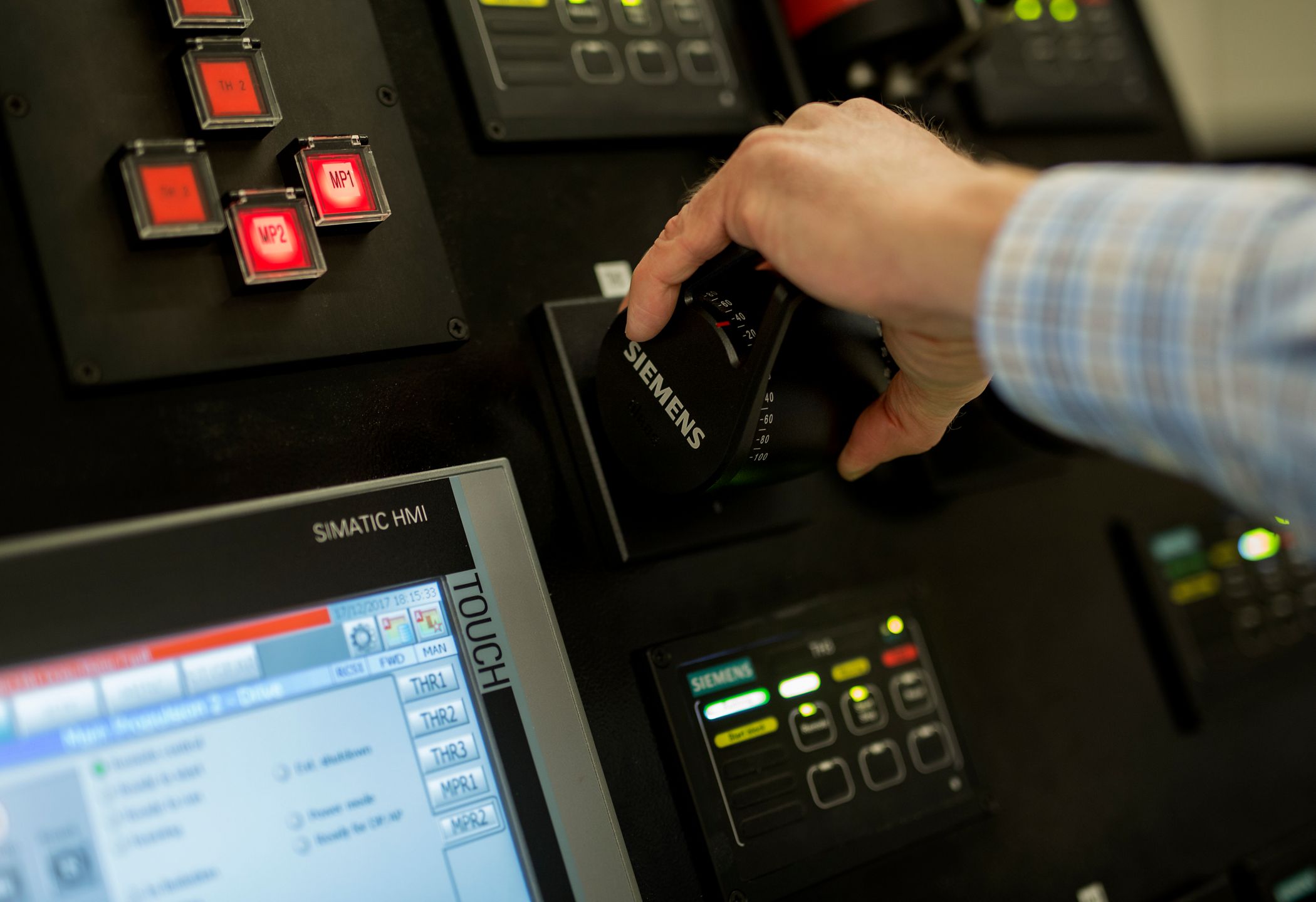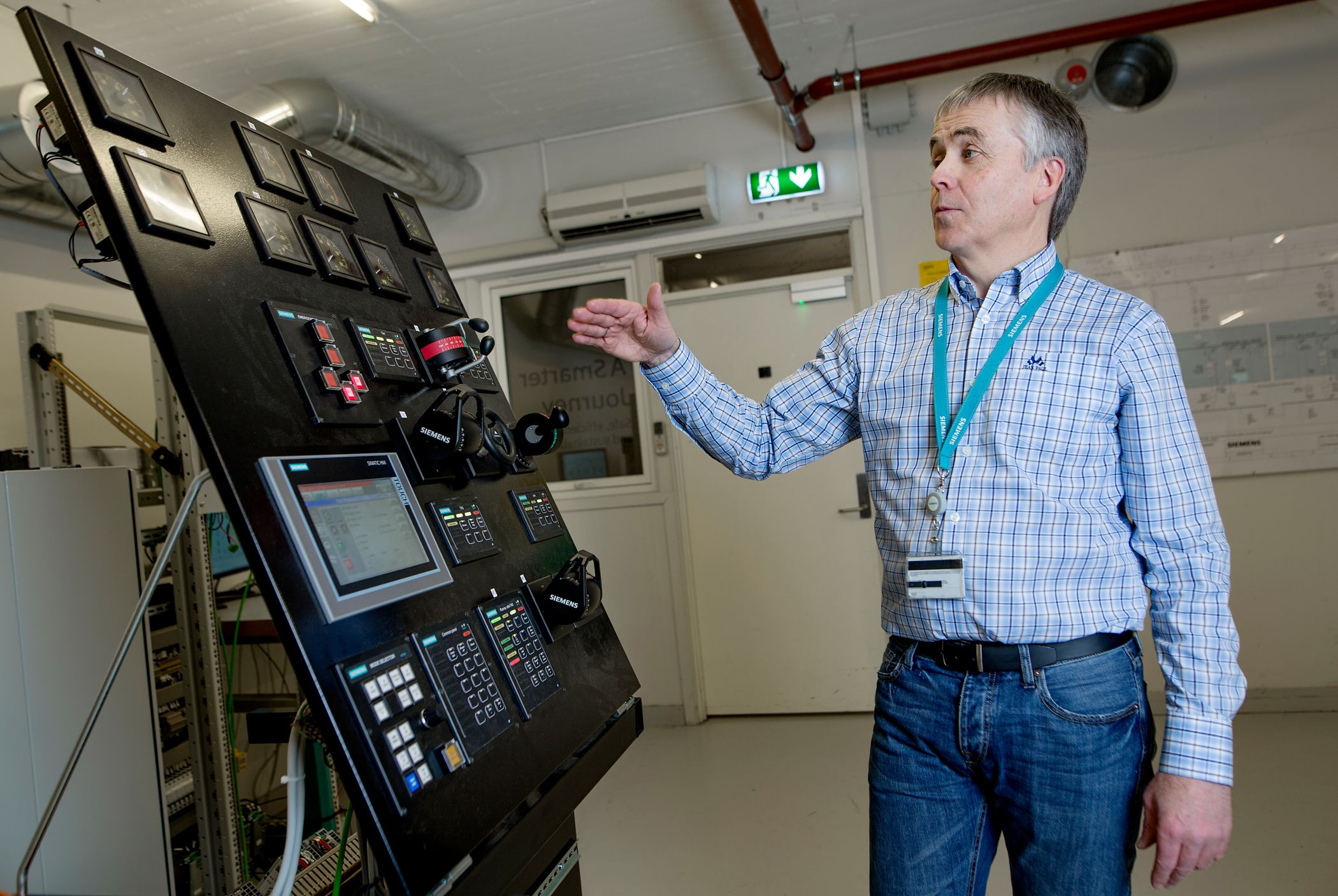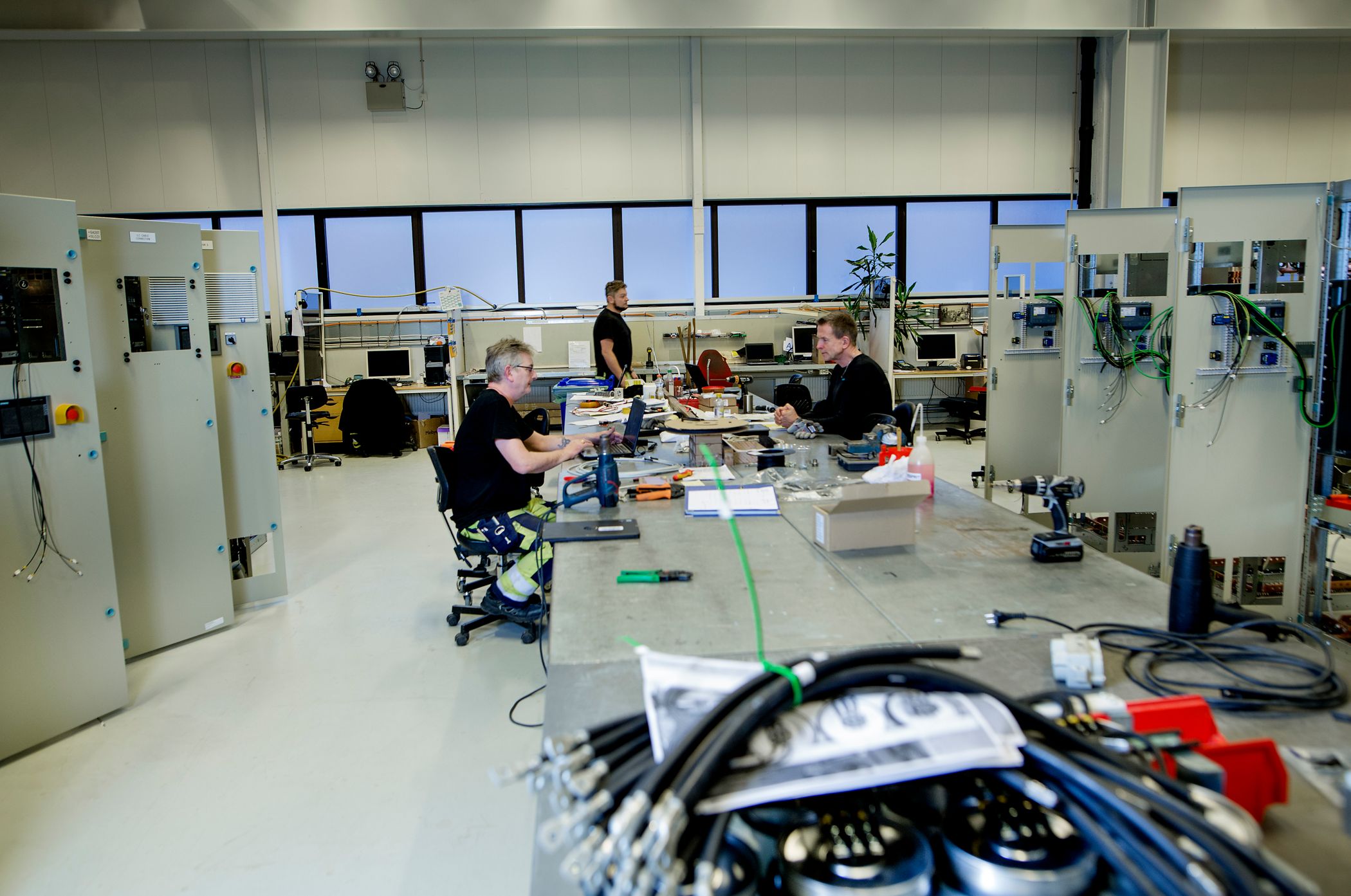Pushing the global technology front
Some of the world’s smartest engineers are working in a basement in Trondheim. The technology they are developing here is in demand in both Asia and the US, and most of it is top secret.
“What’s happening here is so secret that even I don’t have access,” said Torstein Sole-Gärtner, head of the Siemens technology development department for offshore and marine activities. He knocks on a door. Waits. The door is opened, only to reveal a smiling face.
“It’s you! You can come on in, then,” says engineer Marte Elisabeth Bakken Skjønsfjell, and takes a step back.
In Trondheim, Siemens is building a brand-new battery factory for the maritime market. Everything must be ready before the summer. In a windowless room, Skjønsfjell is working to test ground-breaking battery systems.
“Now I check whether the measurement results are as expected. There is a lot of practical testing to be done to test how well these things are working,” explains Skjønsfjell while keeping a close eye on the battery packs in front of them.

“What we are doing we have not done before, so it’s very innovative for us,” says engineer Marte Elisabeth Bakken Skjønsfjell. Here, she tests the battery systems she has helped develop in a power system that is identical to that found on a ship. Photo: Anita Arntzen
Global leader
Norway is already celebrated for its strong expertise in offshore and marine activities. What is being developed here, behind a well-locked door in Trondheim, is exported to both Asia and the United States.
“We are pushing the technology front with what we do here,” says Sole-Gärtner, adding:
“Here you cannot take pictures. We are really a little naive when it comes to industrial espionage here in Norway. We mustn’t become completely paranoid either, but there are a lot of things going on you wouldn’t have imagined. We spend a lot of money and resources on developing this, and we don’t want anyone else snatching up the technology right in front of our noses.”

Here there are levers and switch buttons like on a real ship. In the basement in Trondheim, crews can receive training in how to operate the electric vessels. Photo: Anita Arntzen
Siemens has already supplied power systems with batteries for ferries and other vessels for a while. Surveys show that the electrification of maritime vessels is both cost-saving and environmentally friendly. Now, they are also working on making good charging systems for the batteries, and are developing the technology for offshore use.
“We see that it offers very big emissions savings. In addition, it offers great savings in fuel and operation. We strongly believe that this will become even more important in the future, so we are really focusing on it,” says Sole-Gärtner.

“I have always been allowed to develop and fill my backpack with new things to learn,” says Lars Barstad, who has been working on technology development at Siemens since 1985. Photo: Anita Arntzen
Ship in the basement
“I have always been allowed to develop and fill my backpack with new things to learn,” says Lars Barstad, who has been working on technology development at Siemens since 1985. Photo: Anita Arntzen
Behind several locked doors and down in a basement there is a unique laboratory – a power system that is identical to the power system of a ship. We are welcomed by Lars Barstad, Head of Propulsion Systems for Ships. The first thing he does is show where the big red button is. So much electricity at once isn’t harmless.
“If something happens, we have an emergency stop button here, and it completely shuts down everything. And emergency exits are clearly marked,” says Barstad, nodding his head towards the front and back doors of the room.
“We could move this facility right onto an offshore ship as it stands now. What we have inside the cabinets here is identical to the complete mains supplies on board a vessel,” he explains.

Lars Barstad shows us how to start an electric supply ship. Photo: Anita Arntzen
Problem-solvers
After Skjønsfjell has tested the battery systems separately, she brings them along to find out how they work when everything is interconnected.
“Here, I test error scenarios and, quite simply, I’m a bit tough with the system. If that works, then it really works. That is the plan,” she says.
Nothing is left to chance. All imaginable errors and issues should be explored and resolved to make sure that the end-product is good.
“It’s when you get trouble that it starts to become fun!” says Øystein Buanes. He is a development engineer for converter management and gets starry-eyed when things don’t work.
“That’s what’s challenging. It’s fun to be allowed to solve these problems. I get a real reward-kick out of solving an issue,” he says.

Photo: Anita Arntzen
Creative playground
“Now we are steering a boat. Full speed!” says Barstad, while putting his right hand on a spoke and pushing it upwards.
“Here I have the gas lever, so I turn the steering wheel and can navigate the boat all the way around.”
Barstad demonstrates and explains. The laboratory is not only used for testing, but also for training the crew. Those who usually stand on a bridge and control ships can test the system here without risking running aground.
“Here the crews learn what they need in order to operate the equipment and to run easy maintenance. Everything is in full scale,” Barstad explains enthusiastically, as he pushes the lever up even further. He has worked at Siemens for 32 years. Much has changed since he began in the 1980s.
“It’s quite nice to see the development from using analogue technology back when I was young. Now, everything is connected to the PC. It’s great to have been involved in that journey,” he says.
“It may be wrong to call this a playpen, but for engineers who love to develop and try new things, this is a place where you can try out ideas on a large scale,” says Sole-Gärtner.

Siemens has moved parts of its research department to Trondheim. Photo: Anita Arntzen
Green future
But it’s not just about technology for technology’s sake. The vision is to develop systems that have a real positive impact on society and the environment.
“This is to save CO2 emissions and to create a greener industry. We have proven for several years that this has a positive impact on shipping, but we also plan to take this technology into the oil and gas industry, oil rigs and the like. There is a huge potential,” says Sole-Gärtner.
“You don’t exactly get a bad conscience from having this job,” says Skjønsfjell, while she sits and follows the battery system, which will soon help an electric ferry to cross the Trondheimsfjord. To her there is a strong motivational factor in that the work she does becomes something useful and concrete.
“What I’m sitting doing at my desk should actually be used at a real location. That’s quite cool. It will be really something when this gets used on a vessel!”